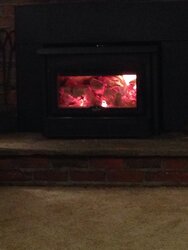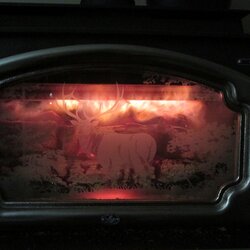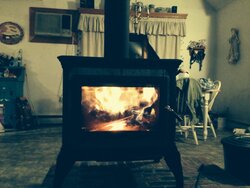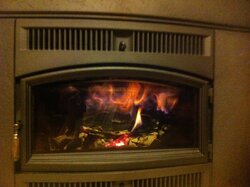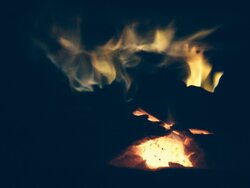I'm new to wood burning in a Hearthstone Heritage and have a question regarding secondary combustion. My typical "shoulder season" burns start with kindling then 2-3 medium splits once the fire is going well. I then wait until I have the top center stone up to 350-400 degrees to start shuting down the intake air. When the stove is in the 350-400 degree range I have lots of secondary combustion, the tubes in the top of the fire box look like lit gas burners. My question is once I cut my intake air down to almost closed my stove cruises at 450 -500 degrees but the tubes aren't very active. I have nice lazy flames and alot of what I think are still considered secondaries, the blueish flames that appear 4 to 6 inches above the logs. The best way to describe them is sorta like northern lights in the sky. Is this typical of secondary combustion in an EPA non-catalytic stove? If I ran the stove with enough air to keep the tubes lit I think I'd over fire the stove in short order. What do the experts say?
Secondary combustion
- Thread starter Bob B.
- Start date
-
Active since 1995, Hearth.com is THE place on the internet for free information and advice about wood stoves, pellet stoves and other energy saving equipment.
We strive to provide opinions, articles, discussions and history related to Hearth Products and in a more general sense, energy issues.
We promote the EFFICIENT, RESPONSIBLE, CLEAN and SAFE use of all fuels, whether renewable or fossil.


